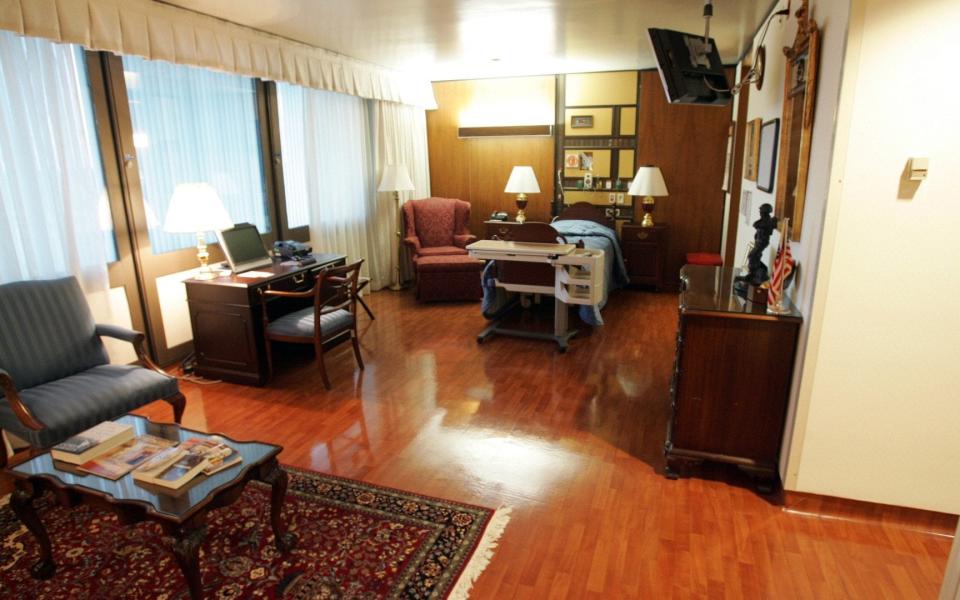Inside the 'Presidential Suite' at military hospital where Donald Trump is receiving care

The sprawling 243 acre military medical facility where President Donald Trump checked in as a patient after contracting Covid-19, features a secure conference room - and even a living space with a chandelier.
Walter Reed National Medical Centre, where White House Press Secretary Kayleigh McEnany said on Friday that Mr Trump would be spending a “few days”, is the world's largest joint military medical centre.
Located roughly nine miles from the White House in Bethesda, Maryland, Mr Trump will stay in the Presidential Suite, often referred to as Ward 71.
The suite is one of six special patient rooms reserved for high-ranking military officers and members of the White House cabinet.
There, Mr Trump will be attended to by some of its 7,000 or so staff members including the nation's top doctors.
The presidential suite, which is run by the White House not the The Department of Defense, includes an intensive care unit, bedroom and secure conference room, WRC-TV reported.

It is also believed that White House Chief of Staff Mark Meadows will have his own office space there and that there is a dining room featuring a crystal chandelier centerpiece.
The suite where Mr Trump is staying was refitted in 2011 when the National Naval Medical Centre and the Walter Reed Army Medical Centre merged.
Rear Admiral Connie Mariano, who served in a medical role for former Presidents George W Bush and Bill Clinton, wrote about it in her 2010 memoir, The White House Doctor.
She said that presidents and vice presidents “are typically treated at the Medical Evaluation and Treatment Unit (METU) at Walter Reed, in a separate, private METU suite specially equipped for their use”.

The hospital known as the “The Nation's Medical Centre” has already been heralded for saving one US president’s life, after former President Ronald Reagan underwent surgery there in 1985 to remove a polyp found during a routine colonoscopy.
Founded in 1909, it has served and cared for every President of the United States since, and is the chosen hospital for members of Congress and the Supreme Court.
World War I saw its capacity grow from 80 patient beds to 2,500 in a matter of months and throughout World War II, Korea and Vietnam, the facility treated hundreds of thousands of injured American soldiers.
The National Naval Medical Centre had its site selected by President Franklin D. Roosevelt in 1939.
The wing dedicated to its high-profile patients was created in 1977, when the original Naval Medical Centre tower was designated a historical landmark and entered into the Registry of Historical Places by the US Department of the Interior.
Walter Reed boasts 88 buildings, with 7,100 staff members treating 40,000 inpatients and outpatients annually across its 100 clinics and specialties.
The hospital has 244 beds in total, 50 ICU beds and 165 Smart Suites, which have digital signage outside to protect patient privacy, track staff and equipment and show others outside the room who is inside with the patient.
The suites can also display "do not disturb" notes, as well as information about the patient, including blood pressure, allergies, and whether they have a visual impairment or fall risk.
The hospital’s Institute of Research at Silver Spring develops vaccines and treatments for infectious diseases such as Covid-19.
The hospital faced controversy in 2007 after a Washington Post investigation revealed accusations of neglect that led to the deaths of several soldiers.
Following the scandal, Major General George Weightman was relieved of his duty overseeing Walter Reed.

